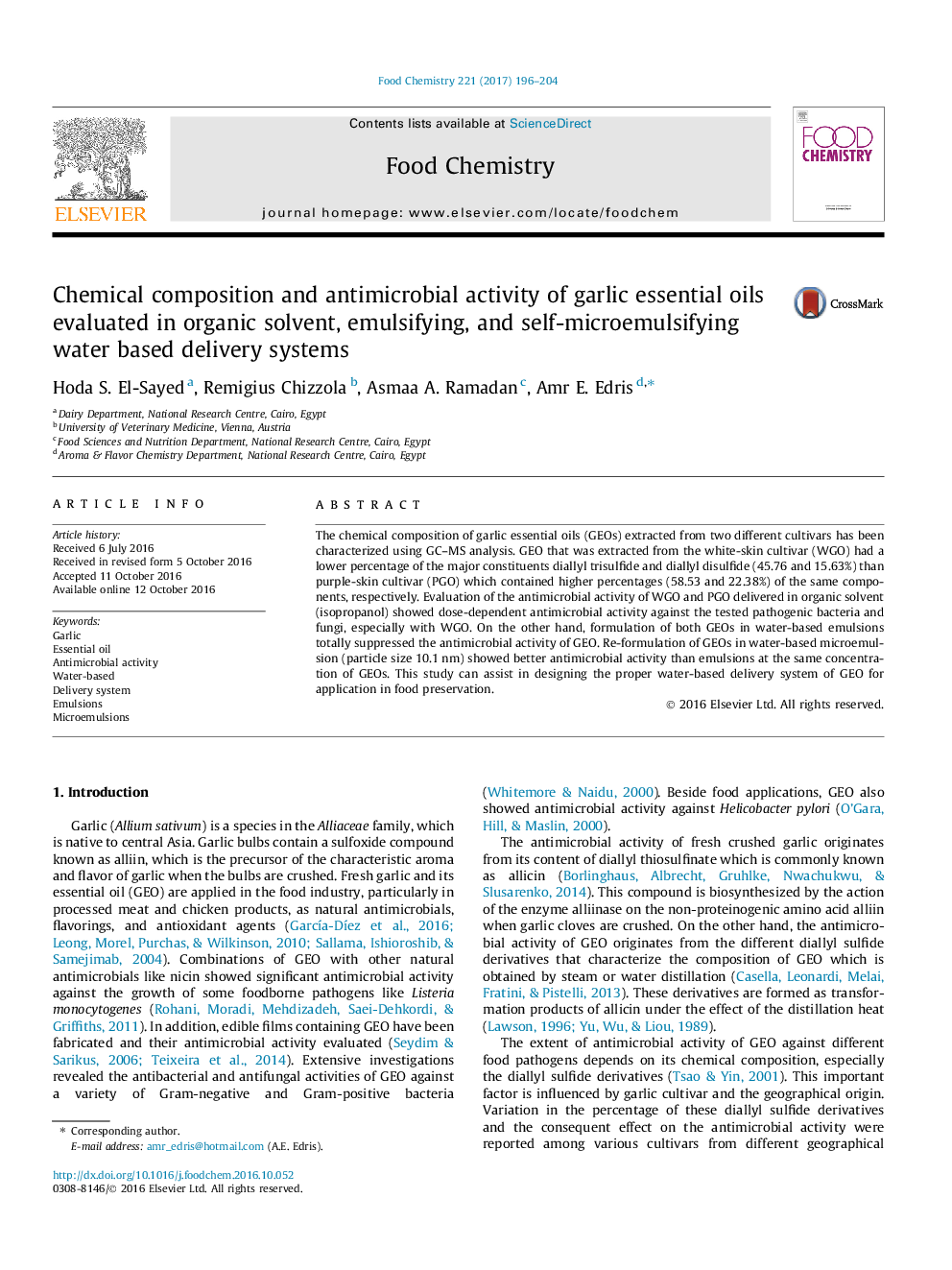| Article ID | Journal | Published Year | Pages | File Type |
|---|---|---|---|---|
| 5133730 | Food Chemistry | 2017 | 9 Pages |
â¢Garlic essential oil (GEO) was extracted from white-skin (WGO) and purple-skin (PGO) cultivars.â¢GC and GC-MS analysis revealed qualitative variation among the different sulfide constituents.â¢GEO from both cultivars exhibited higher antimicrobial activity when delivered in organic solvent.â¢Formulation of GEOs in a water-based emulsion totally suppressed the antimicrobial activity.â¢Formulation in water-based microemulsion showed better antimicrobial activity than in an emulsion.
The chemical composition of garlic essential oils (GEOs) extracted from two different cultivars has been characterized using GC-MS analysis. GEO that was extracted from the white-skin cultivar (WGO) had a lower percentage of the major constituents diallyl trisulfide and diallyl disulfide (45.76 and 15.63%) than purple-skin cultivar (PGO) which contained higher percentages (58.53 and 22.38%) of the same components, respectively. Evaluation of the antimicrobial activity of WGO and PGO delivered in organic solvent (isopropanol) showed dose-dependent antimicrobial activity against the tested pathogenic bacteria and fungi, especially with WGO. On the other hand, formulation of both GEOs in water-based emulsions totally suppressed the antimicrobial activity of GEO. Re-formulation of GEOs in water-based microemulsion (particle size 10.1Â nm) showed better antimicrobial activity than emulsions at the same concentration of GEOs. This study can assist in designing the proper water-based delivery system of GEO for application in food preservation.
